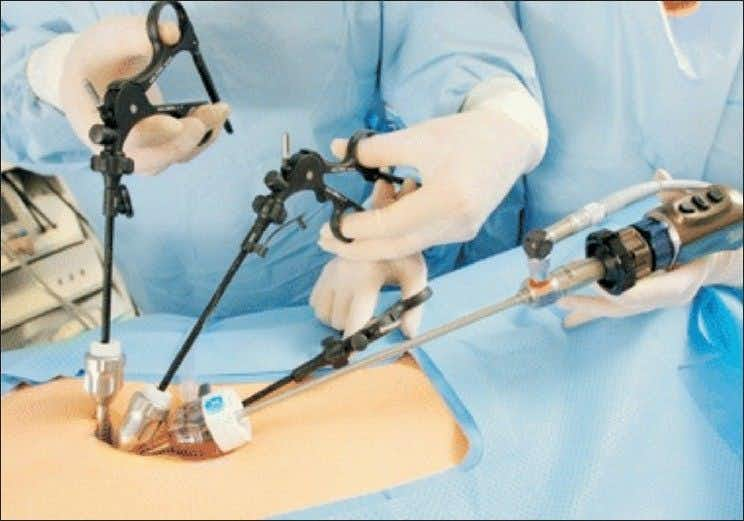This case involves a forty-one year-old male patient with a past medical history of gallstones. The patient presented to the emergency room with signs and symptoms of acute cholecystitis. The patient was admitted to hospital and after several investigations it was recommended that he undergo a single incision laparoscopic cholecystectomy. The procedure was met with some complication. Intraoperatively it was noted that the patient had an intrahepatic gallbladder with severe scarring at the triangle of Calot that proved to be a difficult dissection. Post operatively, the patient was said to be recovering well and did not encounter any complications whilst in recovery. The patient was discharged several days after the surgery. The patient was readmitted to the hospital three weeks later after he presented to the emergency room via ambulance complaining of a two day history of severe abdominal pain and jaundice. On physical examination it was noted that the patient appeared to have a large fluid collection in the abdomen which required drainage via ERCP procedure along with a percutaneous left biliary drain placement. A cholangiogram was performed after the drainage was complete which revealed that the patient had suffered biliary damage. This proved to be the cause of the patient’s abdominal pain and jaundice. The patient was transferred to another facility for a biliary reconstruction procedure to repair the damage that had occurred during the SILS cholecystectomy.
Question(s) For Expert Witness
What steps can a surgeon take to ensure the identification and protection of the biliary tract to prevent such damage?
Expert Witness Response E-001076
I am a board certified General Surgeon with additional fellowship training in minimally invasive and bariatric surgery. I was one of the first surgeons at my hospital to perform a single incision laparoscopic cholecystectomy, and the first to perform SILS appendectomies. I currently teach this approach to residents.
Single incision cholecystectomy is something that I perform regularly and from experience I can say that it requires a high level of caution to perform well. The surgeon should not hesitate in placing additional ports to allow accurate identification of important landmarks such as the triangle of Calot. To visualize this, the "critical view" must be established whereby the fundus of the gallbladder is retracted superiorly and the infundibulum is retracted laterally. This is difficult to perform with sils cholecystectomies and I question if if this surgeon adequately dissected out the gallbladder before dividing structures.
About the author
Michael Morgenstern
Michael is Senior Vice President of Marketing at The Expert Institute. Michael oversees every aspect of The Expert Institute’s marketing strategy including SEO, PPC, marketing automation, email marketing, content development, analytics, and branding.



